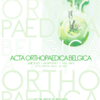Assessment of early Achilles tenotomy in the newborn idiopathic pes equinovarus
pediatric foot deformities; clubfoot; pes equinovarus; Achilles tenotomy; Ponseti method
Published online: Aug 23 2022
Abstract
We aimed to evaluate the clinical and radiological results of early Achilles tenotomy which was performed before Ponseti method in PEV deformities. 37 feet of 26 patients with Dimeglio type 3 and 4 deformities were included in the study. Unlike the classical Ponseti method, patients underwent a mini-open Achilles tenotomy before the first cast. 6-month follow-up of the foot deformities were assessed using Dimeglio classification clinically and lateral talocalcaneal and tibiocalcaneal angles radiologically. There were 20 male and 6 female patients with the median age of 14 days (4-37 days) and 11 bilateral and 15 unilateral deformities. The average follow-up period was 7 months (6-12 months). The mean Dimeglio scores before the Achilles tenotomy and Dimeglio score at the 6 th month follow-up were 14 (11-16) and 4 (4-6) for the right feet, 13 (10-16) and 4 (4-6) for the left feet respectively. The mean number of casting was 3.8 ± 0.4 for right feet and 3.7 ± 0.4 for left feet. The mean talocalcaneal angle was 24 ± 8.2 degrees for the right feet and 27 ± 8.2 degrees for the left feet. The mean tibiocalcaneal angle was 69 ± 12 for the right feet and 72 ± 14 degrees for the left feet. Early Achilles tenotomy can decrease the total number of cast for deformity correction in Ponseti method and provide good clinical and radiological outcomes at 6 th month follow-up in severe PEV deformities according to Dimeglio classification.
